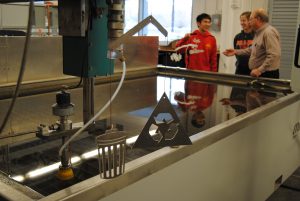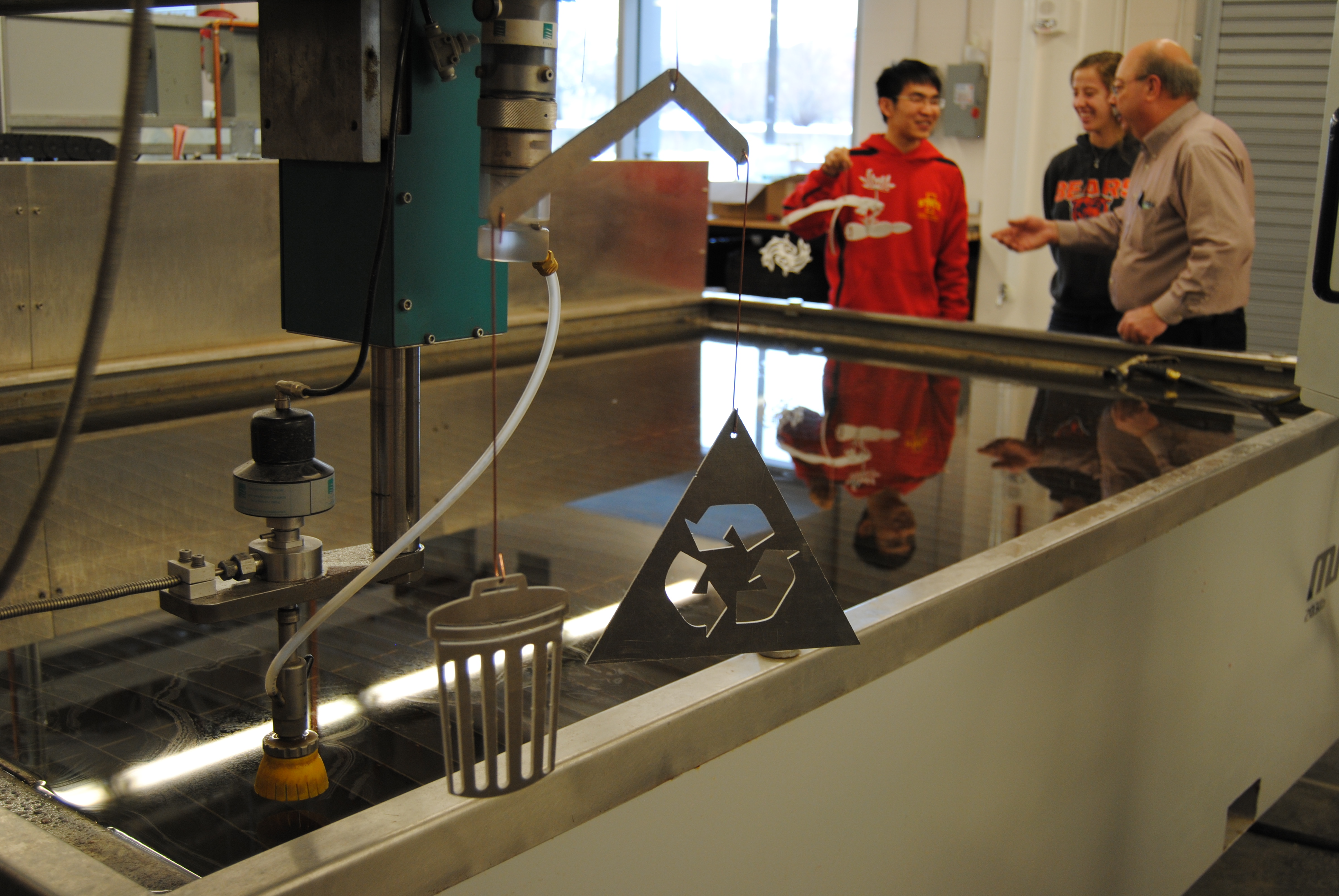BSE/AE 218 uses water-jet cutter to apply theoretical science to physical products
Group projects are known for providing students with important lessons about team dynamics, but there are always additional tools and knowledge that come from these experiences. In the agricultural and biosystems engineering department, a new high-powered water jet shows student groups the difference between theoretical and physical realities in project design.
The water-jet cutter is currently used in BSE/AE 218, where students are tasked with designing a mobile, but they aren’t given any obvious problem to solve. They also don’t receive any design requirements or criteria to follow.

Students first begin the assignment by designing the mobile on paper, and then they use computer-assisted design (CAD) to develop a model. From there, the mobile is printed with the water-jet cutter, which cuts the student-designed parts from aluminum. After this step, students check to see if the mobile works as intended. Many students find flaws and go through the design process again until they get it right.
ABE lecturer Norm Muzzy says the new technology gives more depth to the project, as it shows students what they design on paper might not be reality once a physical product is actually developed. He adds that the technology has shifted student focus from making something that looks great in theory to creating precise work and determining the best solution.
The project also encourages students to apply past course knowledge while they engage in the engineering design process. Students learned CAD as freshmen, but many haven’t seen their designs translated into an actual product as they have with the water-jet cutter. “It’s really enlightening for engineers to see they can build something physical beyond the computer-based work,” Muzzy said.
BSE/AE 218 was initially designed four years ago by ABE professor Steven Hoff to emphasize problem solving and project management for sophomores before their first internships. ABE associate professor Michelle Soupir and Muzzy now teach the course with a focus on the engineering design process.
Muzzy says the lessons learned in the class are applicable for all students because in industry and research an answer always has to be found, unlike in classwork, where you can get partial credit. “This course is a lot like what working engineers experience. You have to get it right and come up with something that might work, and then figure out how to fix it and make it better. Eventually you come up with an acceptable solution.”
Balance is another part of the project that will have lifelong implications for students. Muzzy commented, “There is a lot of give and take that goes into on-the-job work, especially when compared to coursework that has equations to solve and one solution. When you are looking at open-ended engineering design problems, you have to find the balance between the theoretical and the physical realities.”
